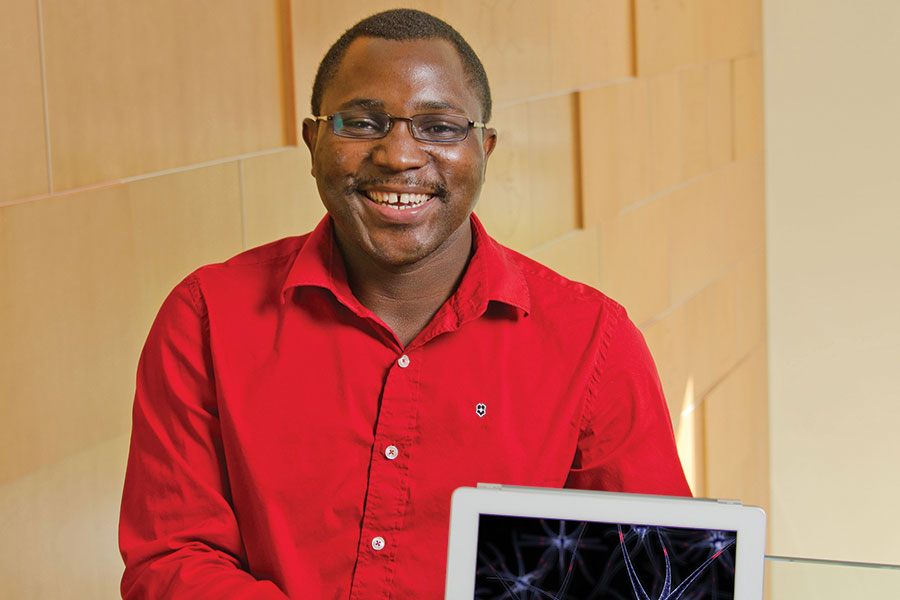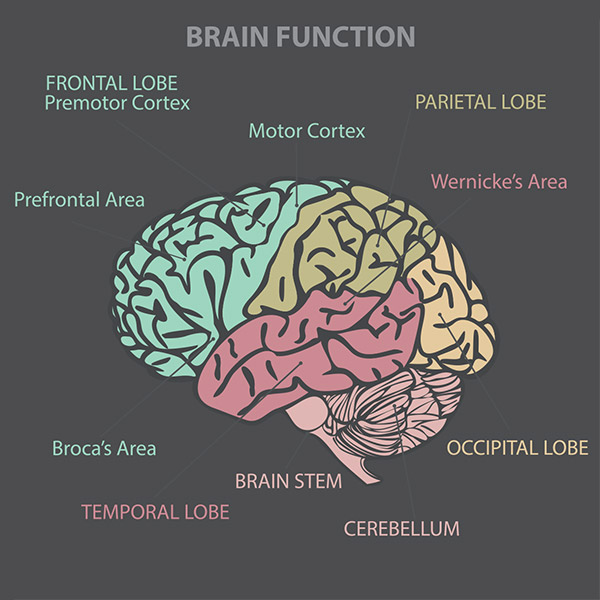THEIR LIFE'S WORK
The Brains Behind Neurological Research
Goodwell Nzou ’15 contributed to a breakthrough model of the brain that holds promise for better understanding neurodegenerative diseases.
by Robin L. Flanigan

While a doctoral student at Wake Forest University, Goodwell Nzou '15 created the first 3-D model of the human brain — a development that could speed up drug discovery and screening, and potentially improve treatment for diseases such as Alzheimer's, Parkinson's, and multiple sclerosis. "It's very daunting," he recalls of the process. "You're failing constantly and hitting walls every single day."
Even so, Nzou and fellow researchers engineered a tissue model containing all six major cell types found in the cortex of an adult brain, promoting the formation of a blood-brain barrier that mimics human anatomy. The barrier is a semipermeable membrane that separates circulating blood from the brain, protecting it from potential toxins that could cause injury.
Now that the 3-D model exists, the question becomes whether it can be used to mimic disease conditions. The hope is for the model to help understand the molecular hallmarks of neurodegenerative diseases, which may allow for the development of more effective drugs to be used against them. But Nzou has to leave that experimentation to the other researchers.
As of July 2019, he is a neuroscientist and postdoctoral researcher at the University of Pennsylvania, where he investigates whether microtubule-stabilizing agents — effective chemotherapeutic drugs widely used to treat cancer — would provide insight into developing and identifying lead drugs for combating neurodegenerative diseases. His former Wake Forest colleagues are making sure he stays in the loop, however, because Nzou is interested in knowing how the model is behaving in the experiments being run. "This model is my baby," he says. "I want to keep a watchful eye on it."
Nzou found his passion for chemistry his freshman year at Nazareth, supported by Associate Professor of Organic Chemistry Stephen G. Tajc, now chair of the Chemistry & Biochemistry Department. He began working on projects with Tajc, and as a sophomore landed a three-month internship at the University of California, San Diego. "It was a big deal for me to get the opportunity to work in a prestigious lab that early," he says.
That opportunity takes on even more weight when considering Nzou's background. Growing up in Zimbabwe, he lost a leg to a snake bite when he was 11, because of inadequate medical care in or anywhere around his village. Once he got out of the hospital, which was nearly 250 miles from his home, "I started studying," Nzou says. "I wanted what had happened to have a meaning. My experience with western medicine made me want to be part of a bigger world, a world where one day I may be like the doctors who saved my life."
Nzou's research has been featured in a variety of publications, including Scientific Reports, Neurology Today, and Salon, and his work holds promise for better understanding the pathways and progression of debilitating diseases — though Nzou emphasizes there's still lots of work to do. "The 3-D model needs to be used by many other scientists independently to see if it would be as useful as we're talking about right now," he says, "but I'm very optimistic for what could come out of it."
Robin L. Flanigan is a writer in Rochester, N.Y.
